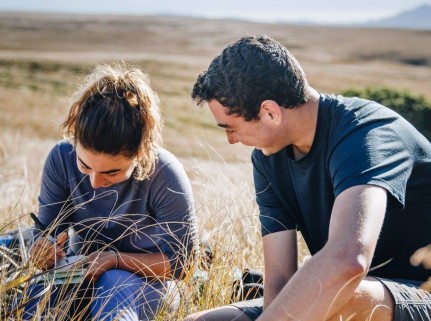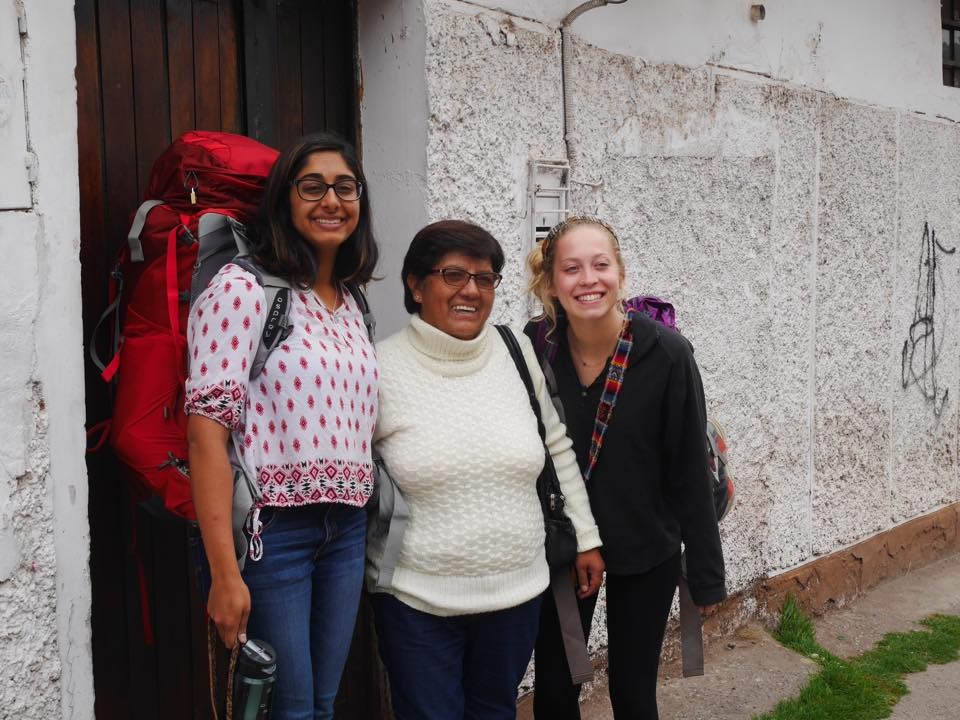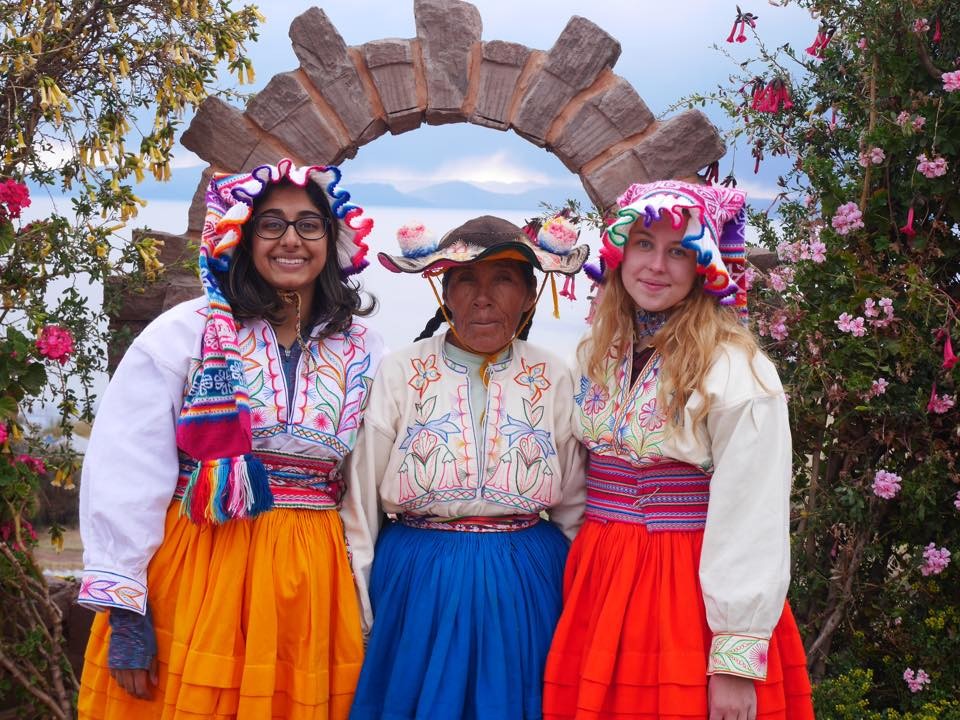As we have traveled through Peru and Ecuador, our group stayed in a multitude of accommodations ranging from single nights in hostels to whole weeks in community member's homes. We’ve grown accustomed to unpacking and repacking our entire backpacks, sometimes within a matter of minutes. Some of the incredible places have been hipster, eco-friendly hostels or nice hotel rooms, but the places I’ve felt most at home are in the homestays.
Here is the thing about homestays:
- They are awkward;
- they are hard to navigate; and
- they are some of the most gratifying experiences I've had.
Two homestays that truly stand out for me are both indigenous communities: Llachon in Peru and Agato in Ecuador, both quite different from the other but both equally rich in culture. These two homestays are where I was pushed out of my comfort zone mentally and physically simply because of the vast differences between my home lifestyle and those of my host families. And thus, these are the two homestays that I have gained the most from.
Llachon is a small community nestled literally on the banks of Lake Titicaca. The lifestyle and culture is very traditional: Quechua is the primary language rather than Spanish; the women wear long colorful skirts and small hats decorated with flowers; most everyone is involved in agriculture and are generally reserved and quiet.
The first thing that we all noticed as we pulled up to the hillside was the stunning view: the sun was close to setting just past the blue expanse of Lake Titicaca. Mountains surrounded us. As the sun sank between two distant peaks, the sky lit up so many colors- fiery orange, faint pink, a streak of murky white against the clear blue. One of the rays escaped through a fluffy cloud and I remember thinking, “No wonder this place is considered the birthplace of the Incans. It is truly godly.” The other thing I noticed was the sound, or rather, the lack of it. After the loud horns and midnight yells of Cusco, the peaceful silence was welcome. This place was beautiful and tranquil.
The breathtaking views and natural silence set the tone for our time there. I did a lot of admiring, thinking and reflecting on nature, myself, and the way I live. There was a lot of downtime, which could have been boring, but actually gave us time to connect more intentionally. The days were filled with laughter coming through all the windows of the houses. While these families lead quite different lives from our own, that was not what I stood out about the community. Rather, it was the depth of connection the community had, and we were invited into.
My host mom, Theodosia, spent her days busy with her flock of sheep a and plot of land. She was extremely loving and welcomed us into her life. On our second morning, she knocked on our door and mysteriously commanded, “vamos”. Al, Emma, and I just looked at each other, shrugged, and followed her out to the field.
I certainly didn’t expect that we ’d be feeding lambs! Our mom took out some bottles of warm milk and two little lambs came rushing over. Our favorite was a weak black lamb, Negrito, who didn’t have a mother. Throughout the week we visited Negrito and the rest of the flock. As well as helping with the sheep, one morning we joined forces with our host cousin and her 'kids'- our group-mates Priyansh and David- to tend to the fields. Theodosia quickly excused us from the real hard work, leaving the chicos fuertes to finish up plowing a small corn field.
Communicating in Llachon was both hard and easy. Theodosia hardly spoke Spanish, except for the bare minimum, and with an accent. However, I also only spoke enough Spanish to talk about things like the weather and the food. So we bonded over things like my love of trout or how cold it was at night. Evenwith these minimal conversations, I still felt - I continue to feel- a connection with our mama. It was apparent that she loved us as well; when we left, she had tears in her eyes and repeated over and over how sad she was that her daughters (Al and I) were leaving. And I truly did feel like her daughter.
Just a few days later, we found ourselves in our third homestay in Agato, Ecuador. Agato was incredible for completely different reasons. The people spoke Spanish fluently, especially the kids, and we chatted excitedly with them day and night. Everyone in Agato was talkative, welcoming, and loving. The colors, the music, and the community was so vibrant and enticing.
We were all enchanted by the central house, Pakarinka, which was some sort of upscale, circular straw house outfitted with wifi, hot water, a laundry machine, and a complete set of the Harry Potter movies...in Blu-Ray. I caught glimpses of the Flinstones, Looney Tunes, and Peter Pan on my family’s TV. For an indigenous Andean community, Agato was far more modern than I expected. Pakarinka was a classic example of the delicate fusion of ancient indigenous traditions and modernity that flows through Ecuadorian and Peruvian culture. The traditions still exist in dress, music, and sense of community; we all got to partake in that through working in the minga- a community-assembled workforce that help on local projects.
There was such an openness and closeness among the people of Agato. David said his host mom would do the grocery shopping for multiple families; everyone greets each other with buenos dias" as they pass each other on the streets; and the whole community gathers for cultural ceremonies and parties.
We were kindly invited to a large fiesta at the end of the week with our families. We all dressed in traditional clothing which included beautifully embroidered shirts, tight belts, long skirts, and lots of jewelry for the girls and ponchos and hats for the guys. Everyone shared performances in Kichwa, Spanish, and English. I even got to learn and sing a Kichwa lullaby with a shaman. After the performances, we made pizza for our host families and they made us cui (guinea pig). There was so much music, dancing, and laughter that night as we were all welcomed as true members of the community.
My takeaways from these two unique homestay experiences are that the awkward moments in no way outweigh the good ones. I'm talking about the moments where you sit around the table and your host dad explains the local legends about the formation of the volcano, or the moments where you spend hours on YouTube showing your little brothers and sisters your favorite songs while they show you theirs, or even the moment where you flash your mother a comfortable smile as she hands you a bowl of fried dough, which you proceed to gobble down. I'm deeply grateful that so many people I encountered were willing to open their homes and hearts and accept me as part of the family. I am truly better for knowing them.



Leave a Comment
Your email address will not be published. Required fields are marked *